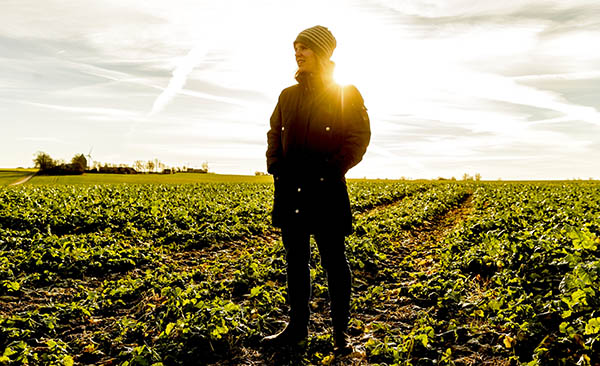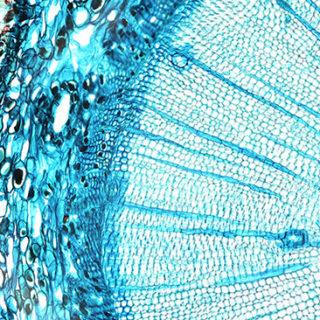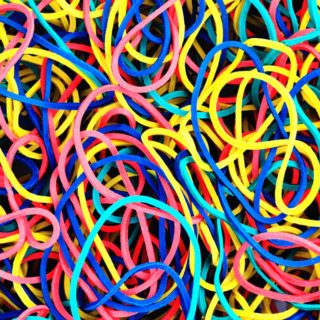From animal feed to protein-rich breakfast food
The disposal or combustion of leftover crops or edible products that have not been sold is a waste of the Earth’s resources. It is also bad economics for farmers. A circular economy in agriculture means utilising the value of a product or raw material by, for example, turning it into a new product. Two researchers who have committed themselves to this are Ingegerd Sjöholm and Karolina Östbring.
Society is aware of how much of the agricultural products delivered to stores is thrown away by them or by customers. However, if we look at the entire process – from planting the seed to placing the grown crops in our mouths – stores and consumers account for only a portion of the total waste.
“Tremendous losses occur already before, during or immediately after the harvest”, says Ingegerd Sjöholm at the Department of Food Technology, Lund University. “But this does not factor in the losses incurred when vegetables or other plants cannot be harvested or fitted into the market.”
Ingegerd Sjöholm and her colleagues are trying to find an economical and sustainable way of also using this biomass.
ONE EXAMPLE OF BIOMASS that can be reused in a better way are the oil cakes that remain once the oil has been extracted from the rapeseeds. Three kilos of seeds give the farmer one kilo of oil and two kilos of remaining solids, pomace. The pomace is often used as animal feed or for producing biogas.
So what can be done? According to Karolina Östbring, researcher at the Department of Food Technology, the oil cakes that remain from rapeseeds usually contain many different proteins, including oleosin.
“What’s good about oleosin is that it is a functional protein. This means that the protein has the ability to place itself in the interface between water, air or fat, which means that it can be used as an emulsifier, like the yolk that binds oil with water when you make mayonnaise.”
“You don’t think about the fact that there are so many products in stores that contain emulsifiers: sauces, soups, desserts, ice cream, and actually all beverages. In Coca Cola, for example, the taste is bound to tiny fat droplets that float in the water”, says Karolina Östbring.
EMULSIFIERS are in great demand in the food industry. Today we use either synthetic (chemically produced) or natural solutions from milk, egg or soy protein. According to Karolina Östbring, the problem is that emulsifiers are very expensive and many people are allergic to the above mentioned ingredients.
“Rapeseed, like broccoli, is part of the cabbage family. Therefore, we believe that by using proteins from rapeseed, there is much less of a risk that people are allergic to them. It would then be possible to produce food with emulsifiers that everyone can eat.”

Karolina Östbring and her colleagues have also shown that oleosins are better oxidation inhibitors than the corresponding emulsifiers on the market, such as soy, egg and milk. By using oleosins, you could possibly avoid having to add other antioxidants.
“You would then get two functions for the price of one”, says Karolina Östbring. “But we have not quite completed our studies, so we don’t know exactly how effective oleosins are as antioxidants”.
“The farmers who are working together with the researchers on the project are obviously very interested in utilising their crops as much as possible”, says Karolina Östbring and continues:
“Today, farmers sell their rapeseed pomace for SEK 2/kilo. If they could sell these leftover products as raw material to be used for new products, the sale price would greatly increase. This is a win-win situation where we take advantage of the Earth’s resources in a better way while improving the economy.”
Also involved in the project are Marilyn Rayner and Rosenlind at the Department of Food Technology.
Text: Pia Romare
Photo: Kennet Ruona
Facts
-
Protein-rich breakfast food
-
New products with climate-friendly proteins
Carolina Östbring and colleagues are trying to produce a type of quark that not only includes oleosins but all proteins that are part of the rapeseed oil cake. The quark is to become breakfast food to which you can add flavour. They hope to be able to turn this into a new product themselves. They have already demonstrated that their method can be scaled up from extracting proteins from pomace in the lab to company scale.
They presented the quark at a competition about developing protein-rich foods from Scandinavian produce, organised by VINNOVA in November 2016. The underlying reason for trying to produce more proteins from plants is that it takes much more energy to cultivate traditional proteins from animals, milk and meat. For example, it requires a lot of energy to breed a cow, milk it, and then process the milk. Furthermore, finding native plant proteins to replace soy is an advantage.
Cold-pressed rapeseed oil provides the most protein
The best way to extract as much protein as possible is to use pomace from cold-pressed rapeseed oil, that is, where the rapeseeds have not been heated above 55°C. Cold-pressing of rapeseed oil is still fairly uncommon, and only a small portion of rapeseed cultivation is used for this purpose. However, in total, about 160 000 tons of pomace are produced each year in connection with the production of rapeseed oil.
-
Antioxidants
-
Antioxidants are substances that prevent fatty acids from reacting with air. Oxidised fatty acids can go bad or taste bad – even create toxic products associated with the oxidation process.
-
What is product waste?
-
Product waste = production loss + waste before sale
Product waste is often caused by factors that occur in connection with the primary production of vegetables, fruit and berries, such as:
when fields are not harvested due to uneven ripening or weather conditions that make the crops mature too quickly
when market prices make harvesting unprofitable
when product are sorted after storage in accordance with the buyers’/customers’ requirements in terms of weight, size, shape and appearance
when products are damaged during harvesting
when farmers grow extra amounts of, for example, vegetables to be sure to deliver even when the weather conditions or illnesses lower the profits, meaning that on a good year there is overproduction at risk of becoming production losses unless the farmer is able to turn these into profit.
Swedish Environmental Protection Agency: NV report 6620 2014
-
Research at Lund University on Circular bio-based economy
-
Forskning kring plast för ett hållbart samhälle – MISTRA: (in Swedish)
Samarbeten för nya biobaserade produkter och processer – LUBIRC: (in Swedish)





